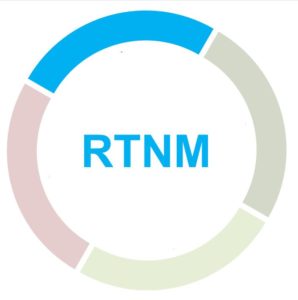
Radiation safety education is provided to healthcare professionals and other support staff working in the nuclear medicine department or with nuclear medicine patients
Radiation safety in nuclear medicine for health care professionals
- Radiation safety education for other healthcare personnel and support staff helps to minimize the risk of contamination and exposure.1
- The goals of radiation safety education include:
- Ensuring the safety of personnel
- Ensuring the safety of support staff and other health professionals
- Minimizing apprehension and misconceptions related to nuclear medicine procedures
- Radiation awareness training provided to other healthcare professionals concerning radiation hazards and principles of radiation safety should include information on2:
- How to interpret radioactive signage
- Types of ionizing radiation
- Biological effects of ionizing radiation
- Dose and exposure limits
- Concepts of low-level radiation and health
- Concept of risk versus benefit
- Appropriate radiation protection measures2
- Proper emergency procedures to be followed until radiation safety personnel arrive at the site of an accident or spill 2
- In addition to providing periodic training sessions for attending staff, written material is helpful.3
- The Licensee (a person who is licensed to carry on an activity) provides instruction and guidance on appropriate radiation safety and proper emergency procedures.4
Radiation safety in nuclear medicine for support staff
- Individuals responsible for safety in the nuclear medicine department should be documented as having been successfully educated regarding radiation safety issues. These individuals may fall under various categories including, but not limited to, general employees, contractor personnel, visitors, and emergency personnel.1
- General employees are workers whose duties do not typically involve direct patient care, the direct use of nuclear substances, prescribed equipment or radiation devices, but who may occasionally go into areas where they could be exposed to radiation (e.g., cleaning and maintenance staff; storage, shipping and receiving personnel; and administrative staff; and may include some categories of nurses, visitors and students).
- Radiation awareness training should be repeated annually, and appropriate documentation should be maintained to confirm ongoing radiation safety educational effort.
- Contractor personnel training should be similar to that required by general employees performing identical tasks, and should be commensurate with the radiological hazards to which they may be exposed.
- Previous training can be identified from the contractor personnel’s documented experience and assessed through training program entry testing.
- If previous training is inadequate, the licensee should ensure that contractor personnel receive additional training appropriate to their duties, or should arrange for them to be directly supervised by suitably trained workers.
- Visitors entering a licensed facility for brief periods of time, such as members of a visiting group, personnel of a delivery firm or messengers, are usually accompanied by an escort and normally should not need any radiation protection training.
- They should be informed of the radiological hazards in the facility and the risk of accidental radiation exposures.
- Other individuals visiting a facility for longer periods, such as scientists and students, should undergo appropriate training similar to contractor personnel/
- Emergency and specialized personnel may be needed for intervention during an emergency (such as firefighters, police, and medical personnel). It is recognized that in some situations, emergency response personnel from outside organizations may not have received radiation protection training.
- General employees are workers whose duties do not typically involve direct patient care, the direct use of nuclear substances, prescribed equipment or radiation devices, but who may occasionally go into areas where they could be exposed to radiation (e.g., cleaning and maintenance staff; storage, shipping and receiving personnel; and administrative staff; and may include some categories of nurses, visitors and students).
References
- Canadian Nuclear Safety Commission. REGDOC-2.7.1, Radiation Protection. Accessed April 9, 2021. https://www.nuclearsafety.gc.ca/eng/pdfs/regulatory-documents/regdoc2-7-1/REGDOC-2_7_1__Radiation_Protection_2021.pdf
- Society of Nuclear Medicine. Performance and responsibility guidelines for the nuclear medicine technologist (revision 2003). J Nucl Med Technol. 2003;31(4):222-229. https://tech.snmjournals.org/content/31/4/222.long
- Thompson MA. Radiation safety precautions in the management of the hospitalized (131)I therapy patient. J Nucl Med Technol. 2001;29(2):61-66; test 74-75.
- Minister of Justice. Radiation Protection Regulations. Accessed April 9, 2021. https://laws-lois.justice.gc.ca/PDF/SOR-2000-203.pdf
Related Posts
-
-
-
Les TRM communiquent les renseignements concernant les patients en s’assurant de l’entière compréhension entre les…
